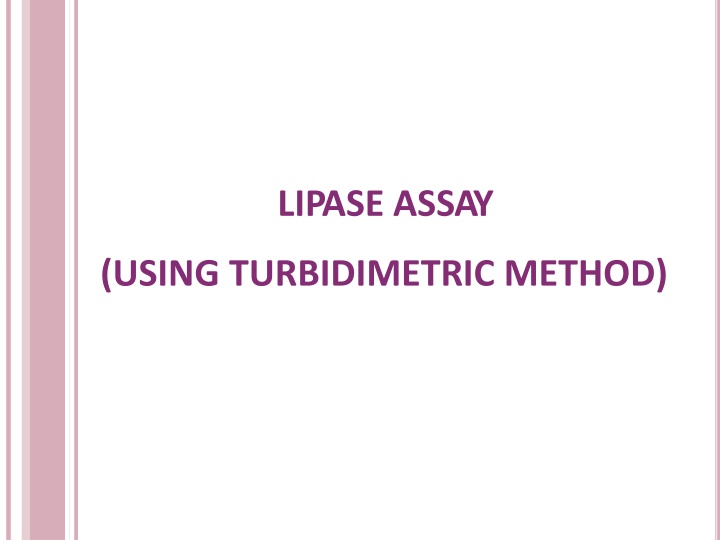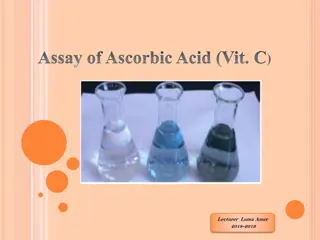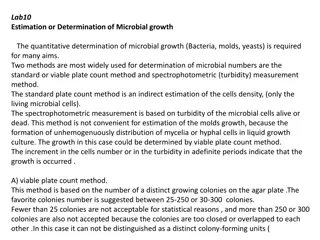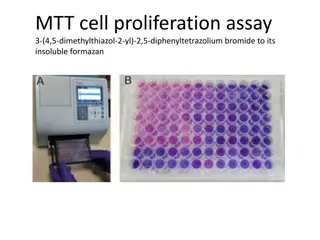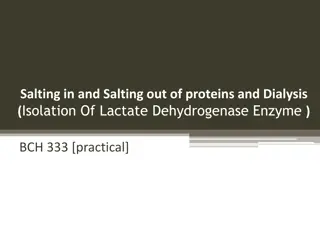Lipase Assay Using Turbidimetric Method
Lipase is a group of enzymes that hydrolyze fatty acids for absorption. This process is crucial for assessing pancreatic conditions like pancreatitis. The assay involves measuring lipase activity in fluids, aiding in diagnosis and monitoring. Serum lipase concentration increases with pancreatic issues and gallbladder inflammation. Low levels may indicate pancreatic damage. Understanding lipase and its significance in health assessment is vital for medical professionals.
Download Presentation

Please find below an Image/Link to download the presentation.
The content on the website is provided AS IS for your information and personal use only. It may not be sold, licensed, or shared on other websites without obtaining consent from the author.If you encounter any issues during the download, it is possible that the publisher has removed the file from their server.
You are allowed to download the files provided on this website for personal or commercial use, subject to the condition that they are used lawfully. All files are the property of their respective owners.
The content on the website is provided AS IS for your information and personal use only. It may not be sold, licensed, or shared on other websites without obtaining consent from the author.
E N D
Presentation Transcript
LIPASE ASSAY (USING TURBIDIMETRIC METHOD)
LIPASE ACTIVITY : Objective -To determine Lipase activity.
INTRODUCTION: - Lipase is defined as a group of enzymes which hydrolyze the glycerol; esters of long chain fatty acids so it can be easily absorbed. - Lipase is produced by the pancreas, liver, intestine, tongue, stomach, and many other cells. - Lipase is produced by the pancreas in large quantity and secrete them into the small intestine. - Lipase testing is indicated in acute pancreatitis and pancreatic cyst. - The measurement of lipase activity in serum and other fluids evaluatethe conditions associatedwith pancreas.
- Serum lipase concentration: - Lipase concentrations is increased with pancreatic duct obstruction, pancreatic cancer, and other pancreatic disease as well as with gallbladder inflammation. - Lipase concentrations are increased in pancreatitis up to 3 times normal. - Thecommonbileductandthepancreaticduct jointogetherto transportdigestiveenzymesandbiletothesmallintestine . - A gallstoneinthecommonbileductcancausebackpressurein thepancreaticductleadingtopancreatitis. -Therefore, acutepancreatitiselevatesbloodlipaselevels.
- A low level of lipase in the blood may indicate permanent damage to the lipase-producing cells in the pancreas and this can occur in chronic diseases that affect the pancreas such as cystic fibrosis. - Symptoms of pancreatitis may include: Severe abdominal pain Back pain Fever Nausea Vomiting Loss of appetite
- Principle: - Serumlipase hydrolyzesthe olive oil emulsion. - The decrease in turbidity at 400 nm ( after incubation (is proportional to lipase activity in the specimen.
SPECIMEN COLLECTION STORAGE - Use fresh serum specimens. - Hemolyzed specimens should not be used. - Lipase activity in serum is stable at room temperature for one week and may be stored for three weeks in therefrigerator (4-8 C) and for several months if frozen. - Caution! - Bacterial contamination of the specimens may resultin an increase in lipase activity.
- Normal range: - In adults: 10-150 U/L - In old individuals (morethan 60 years):18-180 U/L
- METHOD: - Two test tubes: Test Blank Lipzyme reagent buffer 3 ml 3 ml Pre-incubate for 5 min. at 37 C Serum 0.1 ml --- -Read the absorbance (A ) immediately at 400 nm. -Then transfer to water bath pre-incubate for 5 min. at 37 C . - Then read the absorbance (A1) at 400 nm against distilled water.
- CALCULATIONS: - Example: A1 TEST = 0.454 A TEST = 0.464 A1 Blank =0.334 A Blank= 0.332 Normal - Note: - Reagent blank: if (A A1) is a negative value, it should be considered as zero. However, it should normally be between 0.000 and 0.005.
